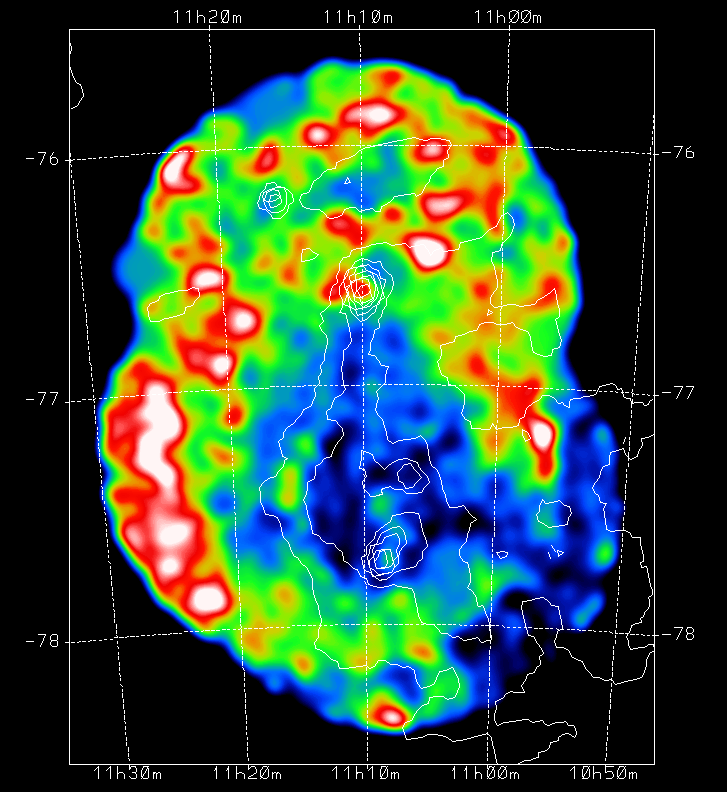Chamaeleon I Dark Cloud

This image shows a ROSAT PSPC false-color image of the Chamaeleon I dark cloud, a well-known site of star formation. The contours show the 100 micron emission from dust in this cloud as measured by the infrared IRAS satellite. This image was made from X-rays with energies between 500 eV and 1100 eV. Since these soft (low energy) X-rays are absorbed by interstellar dust and gas, the observation of a "shadow" provides an indication of the intensity of X-rays coming from behind the absorbing cloud. X-ray "shadows" like this are the X-ray analog of well-known optical dark nebulae such as the Horsehead Nebula, produced by absorption in a dark cloud of optical photons emitted in a bright nebula behind the cloud. In the X-ray case, the entire sky is bright with a diffuse glow known as the diffuse X-ray background (somewhat like the night sky as seen from a modern city, where scattered light from street lamps produces a bright glow in the sky and washes out all but the brightest stars). Observations like this will help us understand the source of the diffuse X-ray background at these energies, which is known to be different from the 1/4 keV diffuse background shown in our image of the Draco nebula in this directory. This work was done by Dr. David Burrows and graduate student Jeff Mendenhall of the Penn State Department of Astronomy & Astrophysics, and is based on a mosaic of images collected by Dr. Burrows and by Dr. Eric Feigelson of Penn State using the US/German ROSAT satellite.
![]() Link to Dr. David Burrows'
X-ray shadows page.
Link to Dr. David Burrows'
X-ray shadows page.
Curator:
HEASARC Guest Observer Facility
Please use the Feedback link if you have questions on ROSAT.

